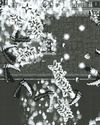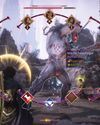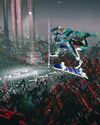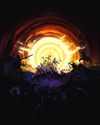Minecraft is a brilliant platform for having fun, but what about its potential as a launchpad for artists?

Minecraft’s eight-year history is studded with extraordinary moments. First, in initial dev videos, it stole attention as an infinite procedurally generated world of blocks. Later, players shared their experiences of it as a game about crafting a shelter to survive a night of zombies. Then, as it started to take off in popularity, players began to explore it as a solo and collaborative construction tool, a game about building things. When in 2010 videos began to pop up showing vast projects, such as a full-scale USS Enterprise and a fully functional CPU, it became clear that Minecraft was more than just a plaything or a game. It was becoming a creative medium in itself.
Since then, a generation of 3D artists has grown and developed an industry making things, places and spaces in Minecraft, 3D maps known in the community as builds. Their canvas is Minecraft’s practically infinite space, their materials the textures and shapes of its blocks.
Marceau Nakayama is one of those artists, having created a series of builds which express some of the breadth of what Minecraft makes possible. His Triangular Ascension 2.0 – Cyberpunk Hangar is a vast and cavernous space hangar that uses light emitting and glass blocks to create an atmosphere of hard light and volume, while the more grounded Kite City & The Burning Sands (see facing page) shows a settlement of wooden posts and cloth sheets perched on rocks in a desert.
Esta historia es de la edición March 2017 de Edge.
Comience su prueba gratuita de Magzter GOLD de 7 días para acceder a miles de historias premium seleccionadas y a más de 9,000 revistas y periódicos.
Ya eres suscriptor ? Conectar
Esta historia es de la edición March 2017 de Edge.
Comience su prueba gratuita de Magzter GOLD de 7 días para acceder a miles de historias premium seleccionadas y a más de 9,000 revistas y periódicos.
Ya eres suscriptor? Conectar

BONAPARTE: A MECHANIZED REVOLUTION
No sooner have we stepped into the boots of royal guard Bonaparte than we’re faced with a life-altering decision.

TOWERS OF AGHASBA
Watch Towers Of Aghasba in action and it feels vast. Given your activities range from deepwater dives to climbing up cliffs or lumbering beasts, and from nurturing plants or building settlements to pinging arrows at the undead, it’s hard to get a bead on the game’s limits.

THE STONE OF MADNESS
The makers of Blasphemous return to religion and insanity

Vampire Survivors
As Vampire Survivors expanded through early access and then its two first DLCs, it gained arenas, characters and weapons, but the formula remained unchanged.

Devil May Cry
The Resident Evil 4 that never was, and the Soulslike precursor we never saw coming

Dragon Age: The Veilguard
With Dragon Age: The Veilguard, BioWare has made a deeply self-conscious game, visibly inspired by some of the best-loved ideas from Dragon Age and Mass Effect.

SKATE STORY
Hades is a halfpipe

SID MEIER'S CIVILIZATION VII
Firaxis rethinks who makes history, and how it unfolds

FINAL FANTASY VII: REBIRTH
Remaking an iconic game was daunting enough then the developers faced the difficult second entry

THUNDER LOTUS
How Spirit farer's developer tripled in size without tearing itself apart